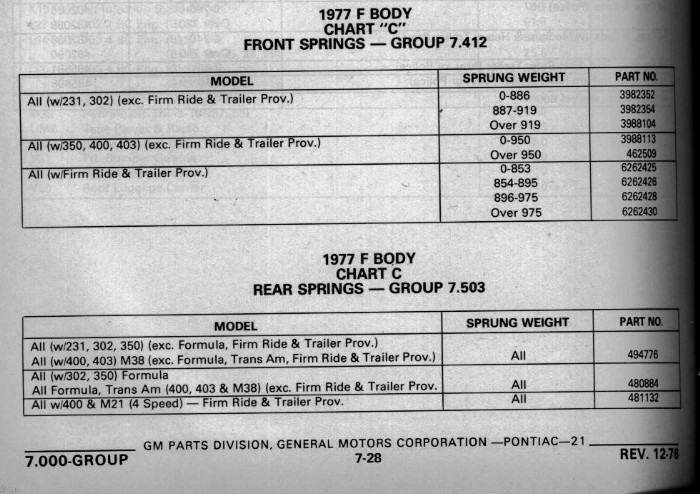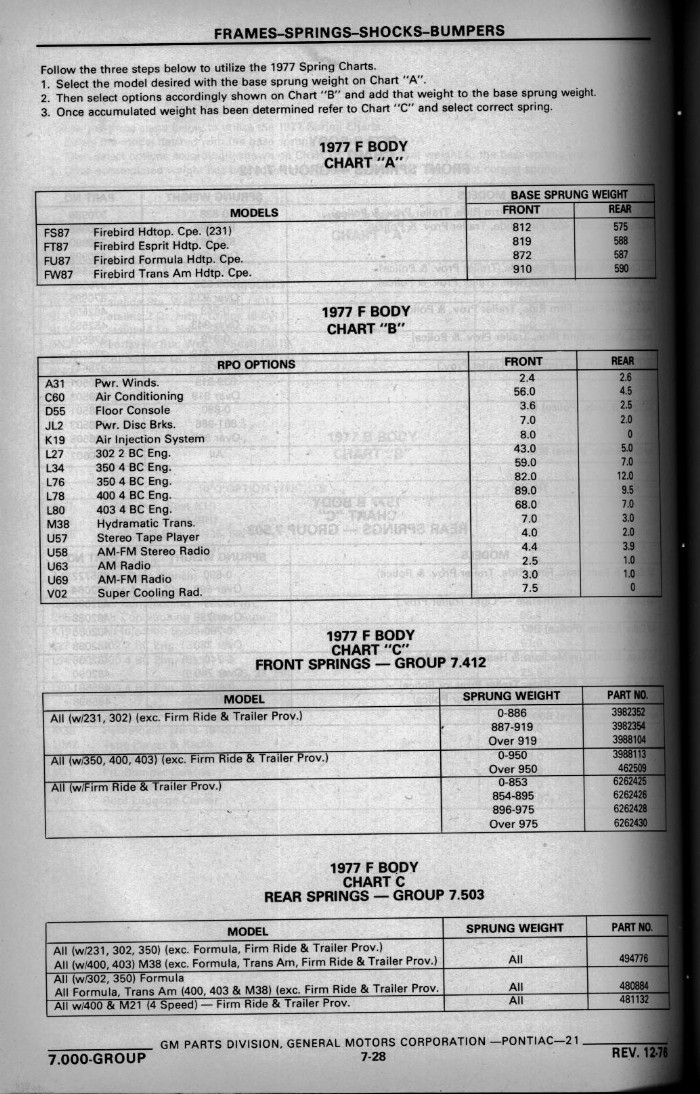There are two ways to look at these springs. The way the cars were built is different from the way spare springs were specified. The build sheets list specific springs for all 4 corners. Usually, the left and right springs did not match, because of different weights on the two sides of the car. For instance, on 1977 Trans Ams, you'd have front springs coded KU, KV, and KW. It's pretty clear that the cars get heavier as you go from U to W. The rear springs were coded PF (softer), PJ (stiff), and once in a while YP (medium).
Here are some specific spring codes for some very heavy cars:
| Description | RF | LF | RR | LR |
| 1977 Y82 Trans Am with 400, auto, a/c, power windows | KW | KV | PF | PF |
| Same car with firm ride | KW | KW | PJ | YP |
| 1977 Trans Am with 400, 4-speed, a/c, power windows, HD Cooling | KW | KW | PJ | PJ |
| Same car with firm ride | UM | KW | PJ | PJ |
In the parts manual, the spring choices were simplified. Left and Right differences are ignored, and there are fewer springs to pick from. The chart that you'd use to pick springs is below.

Note that in front, there's no overlap between cars with regular handling (the first six springs listed) and cars with firm handling (the last 4 springs listed). The firm springs are totally different. Also note two front springs are listed for regular Trans Am, and a single choice (the heavy one) would have been used on Trans Am with firm ride.
In the rear, there are only 3 springs, and just 2 of those can be used on Trans Am. The 400 4-speed's got lumped in with all Firm Ride cars. They're all alike. As mentioned above, this is not how the cars were built, it's simply how they planned to supply parts. The way the cars were built, Firm Ride cars had KW springs, which were also used on (really heavy) regular Trans Ams.
If you want to see the whole process used to to calculate how heavy the car is, the whole chart is shown here. Kind of interesting that they called the 4.9L a 302. If you can't read it, there's a bigger version available by clicking.
